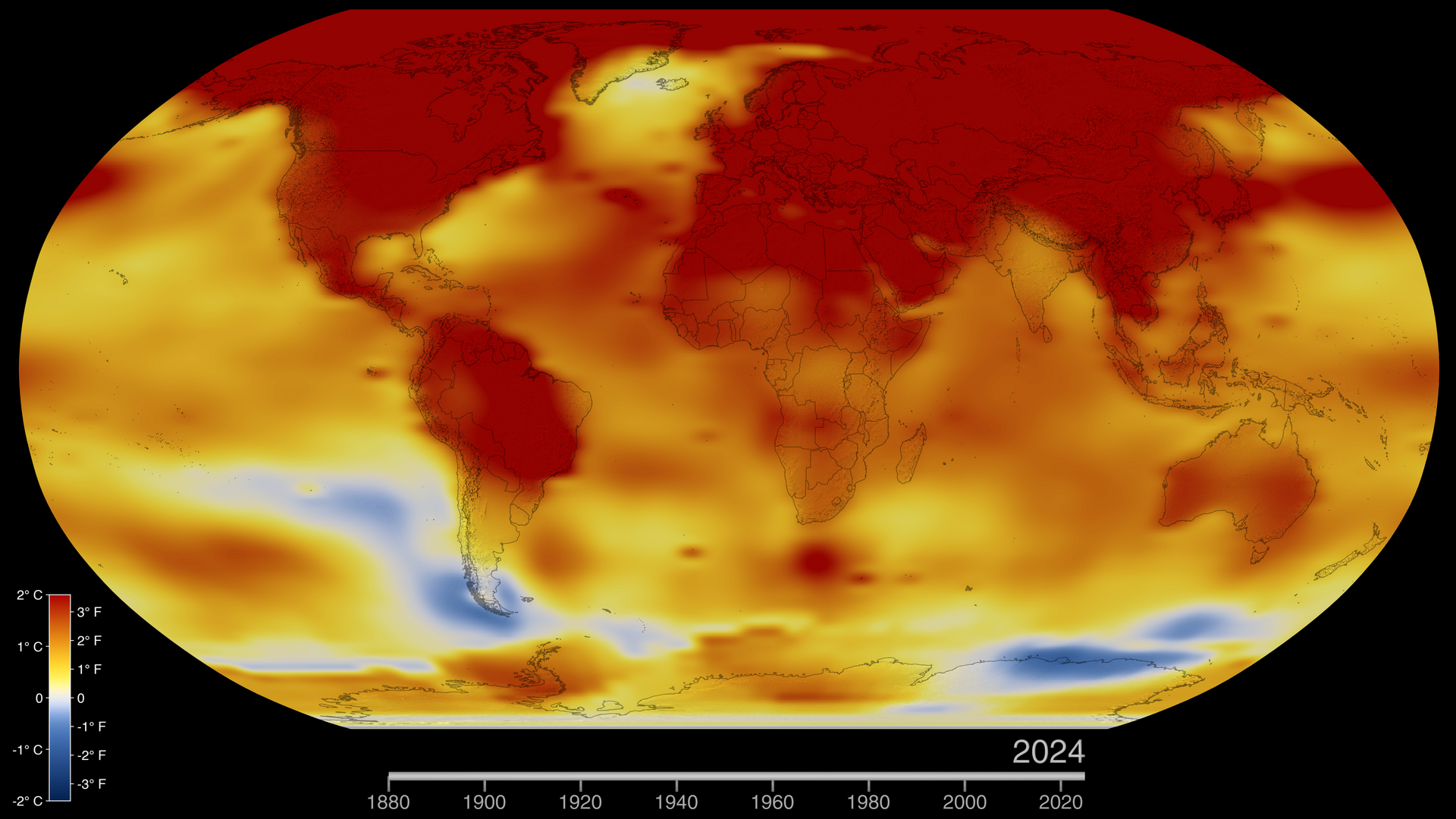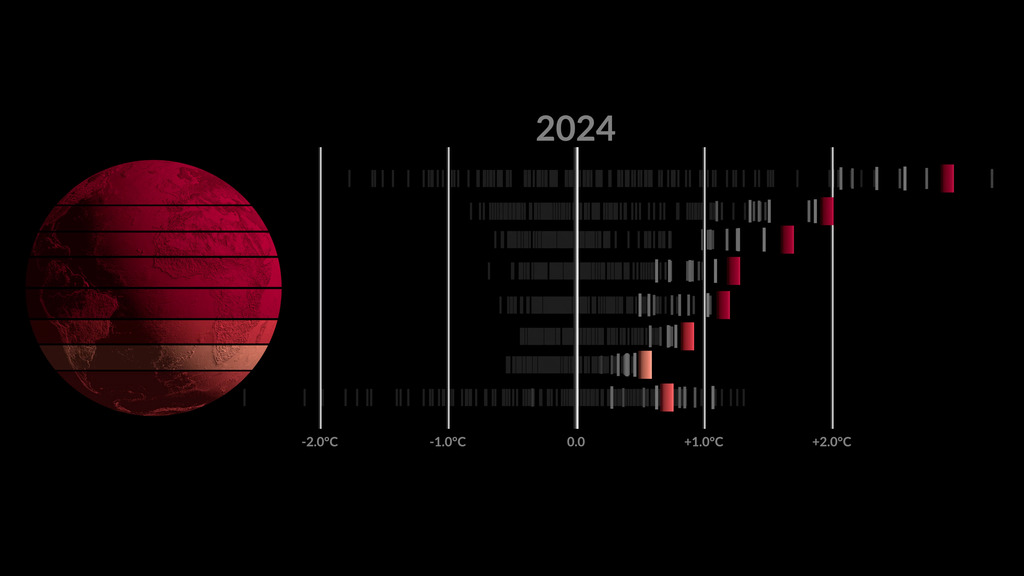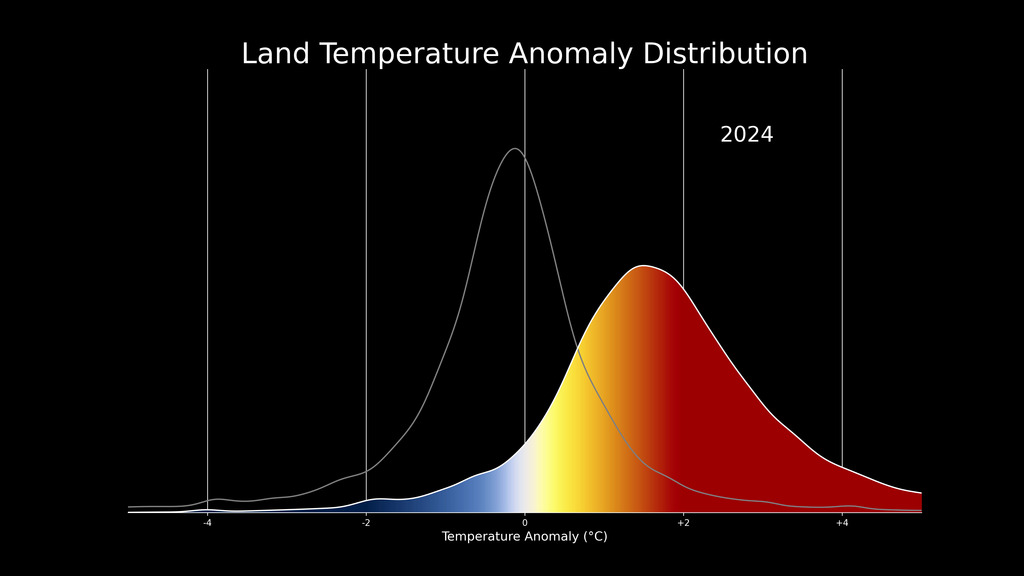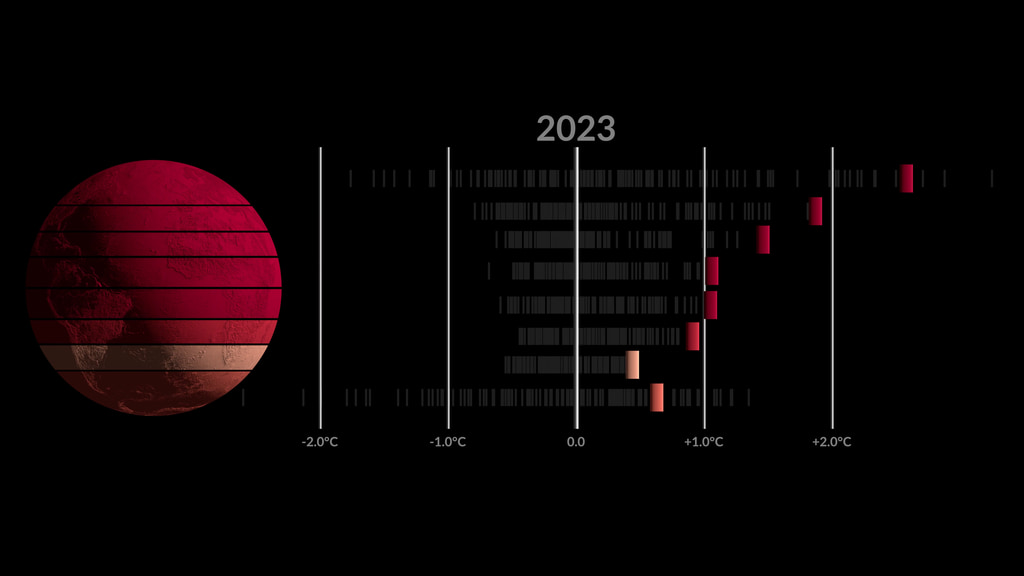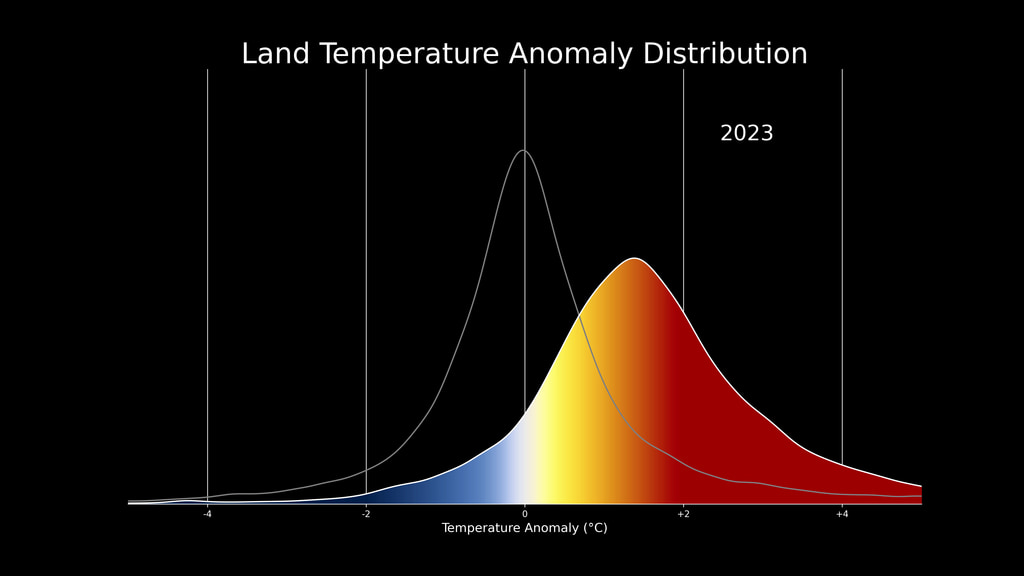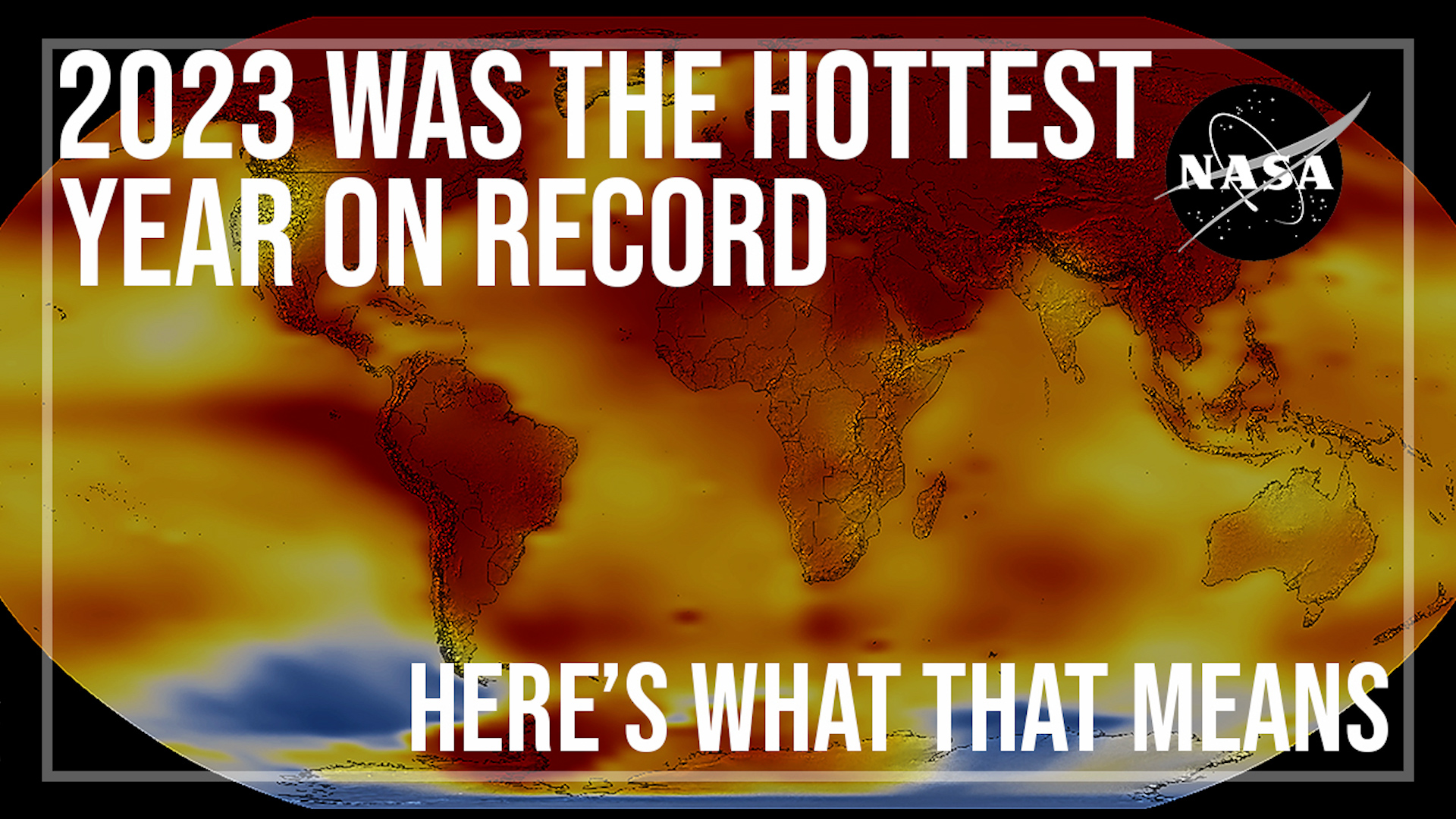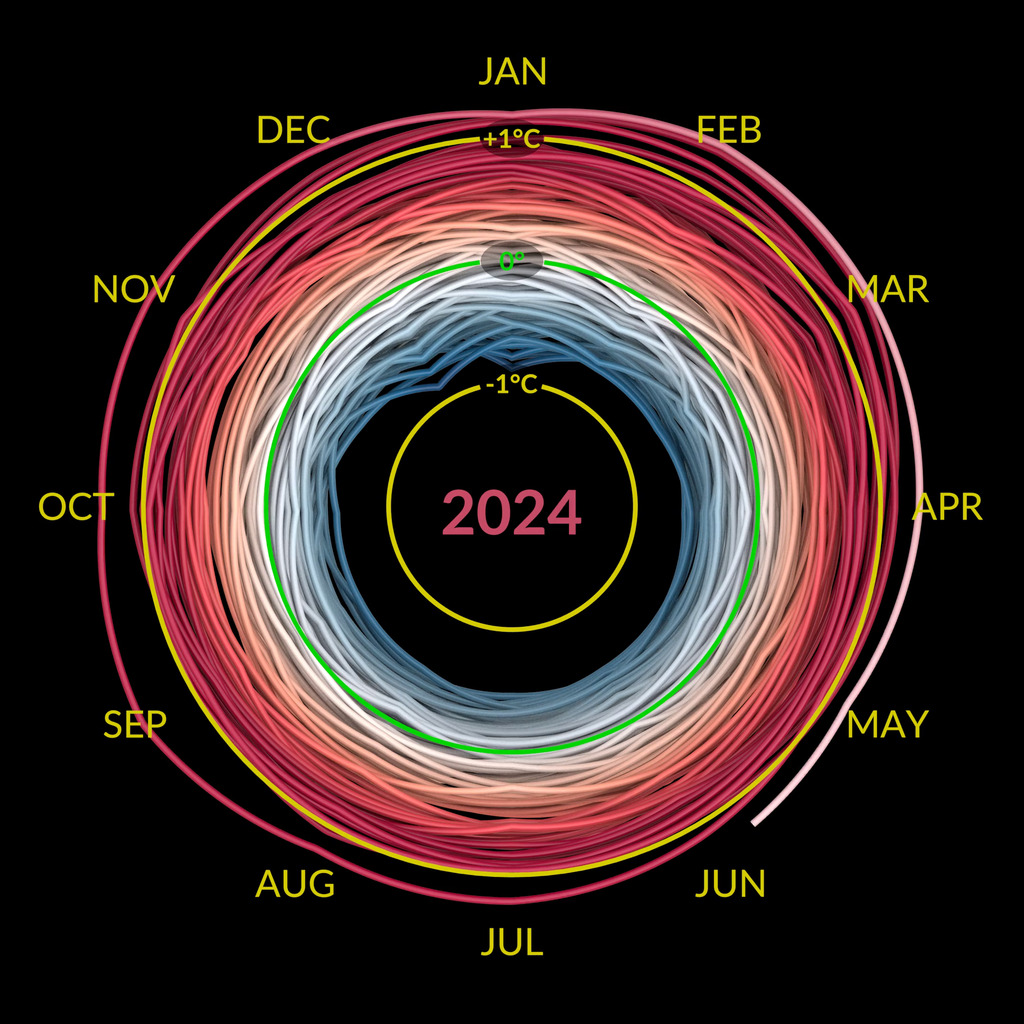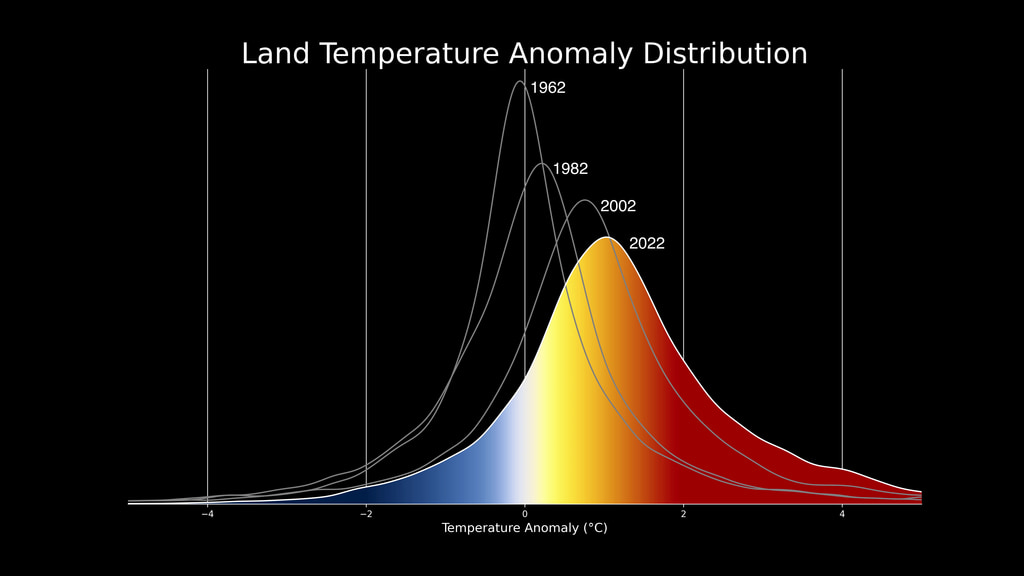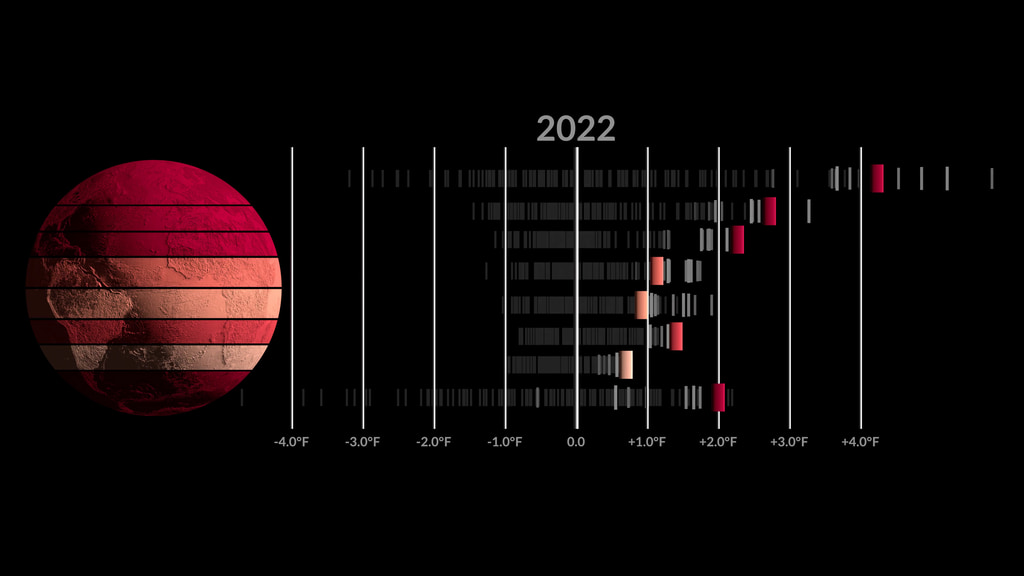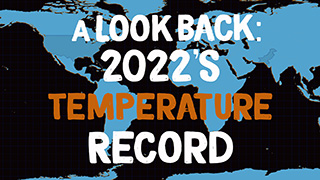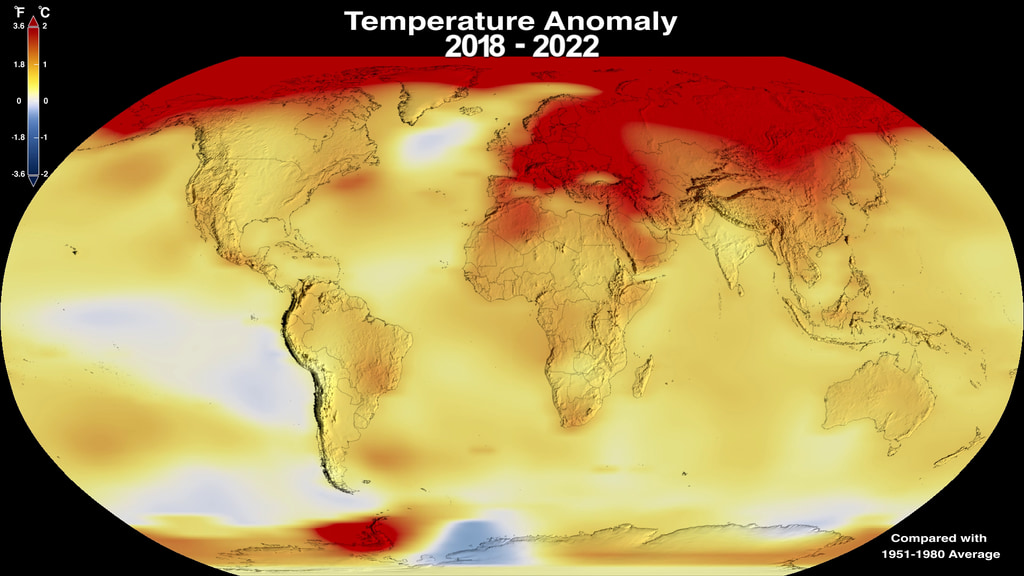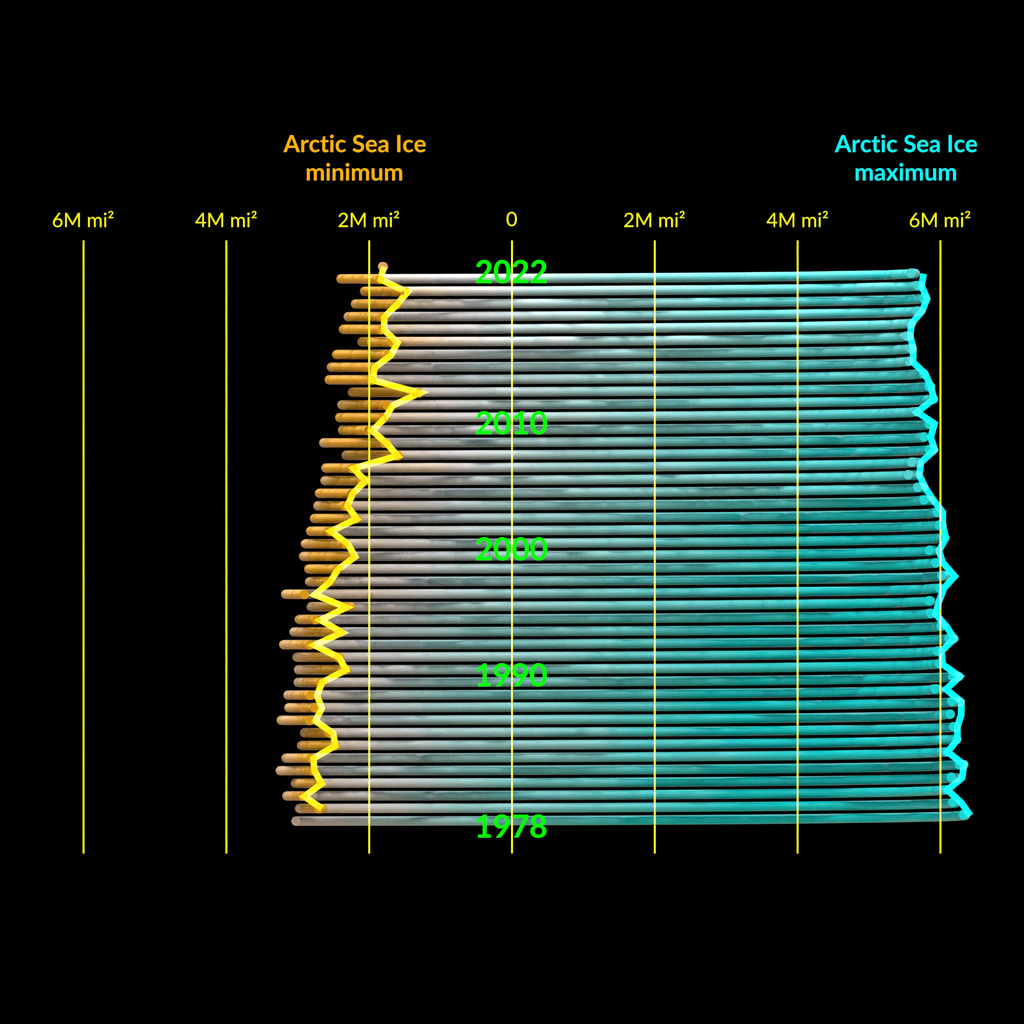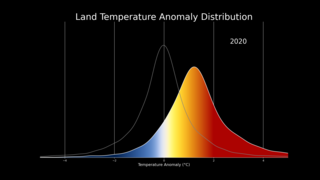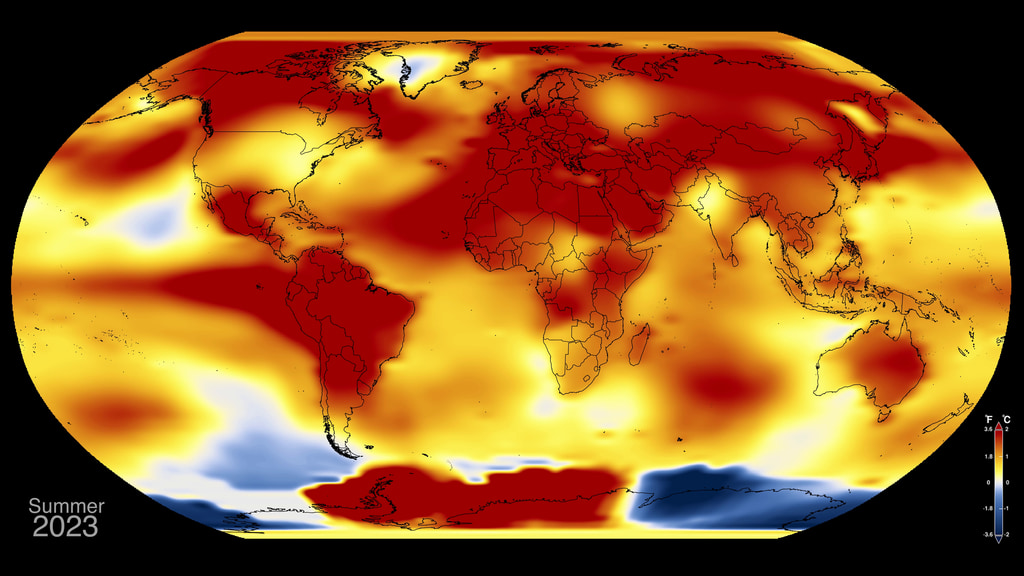Record Temperature Years: 2024, 2023, and 2016
A visualization of global temperature anomalies highlighting the record years of 2024, 2023, and 2016. The visualizations morphs between a data grid showing monthly temperatures and a bar chart of annual temperatures. This version is labeled in English and temperatures are in Celsius.
2024 was the warmest year in NASA's 145-year record. This visualization highlights 2024 as well as the previous record-setting years of 2023 and 2016.
Temperature anomalies are deviations from a long term global average. In this case the period 1850-1900 is used to define the baseline for the anomaly. Please note that this "pre-industrial" baseline is different than that used in most NASA temperature visualizations.
Temperatures are based on the GISS Surface Temperature Analysis (GISTEMP v4), an estimate of global surface temperature change. The data file used to create this visualization is publicaly accessible here. The Goddard Institute for Space Studies (GISS) in New York is a NASA laboratory managed by the Earth Sciences Division of the agency’s Goddard Space Flight Center in Greenbelt, Maryland. The laboratory is affiliated with Columbia University’s Earth Institute and School of Engineering and Applied Science in New York.
A visualization of global temperature anomalies highlighting the record years of 2024, 2023, and 2016. The visualizations morph between a data grid showing monthly temperatures and a bar chart of annual temperatures. This version is labeled in Spanish and temperatures are in Celsius.
Credits
Please give credit for this item to:
NASA's Scientific Visualization Studio
-
Visualizer
- Mark SubbaRao (NASA/GSFC)
-
Technical support
- Laurence Schuler (ADNET Systems, Inc.)
- Ian Jones (ADNET Systems, Inc.)
-
Web administrator
- Ella Kaplan (Global Science and Technology, Inc.)
-
Scientist
- Gavin A. Schmidt (NASA/GSFC GISS)
-
Science support
- Peter H. Jacobs (NASA/GSFC)
Release date
This page was originally published on Friday, January 10, 2025.
This page was last updated on Tuesday, April 1, 2025 at 12:40 PM EDT.
Datasets used
-
GISTEMP [GISS Surface Temperature Analysis (GISTEMP)]
ID: 585The GISS Surface Temperature Analysis version 4 (GISTEMP v4) is an estimate of global surface temperature change. Graphs and tables are updated around the middle of every month using current data files from NOAA GHCN v4 (meteorological stations) and ERSST v5 (ocean areas), combined as described in our publications Hansen et al. (2010), Lenssen et al. (2019), and Lenssen et al. (2024).
Credit: Lenssen, N., G.A. Schmidt, M. Hendrickson, P. Jacobs, M. Menne, and R. Ruedy, 2024: A GISTEMPv4 observational uncertainty ensemble. J. Geophys. Res. Atmos., 129, no. 17, e2023JD040179, doi:10.1029/2023JD040179.
This dataset can be found at: https://data.giss.nasa.gov/gistemp/
See all pages that use this dataset -
MERRA-2 (MERRA-2)
ID: 1134
Note: While we identify the data sets used on this page, we do not store any further details, nor the data sets themselves on our site.
